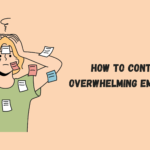How to Fix Broken Trust: Trust is the foundation of any meaningful relationship. Whether it’s romantic, familial, or professional, trust allows us to feel safe, respected, and understood. But when trust is broken—through lies, betrayal, broken promises, or repeated disappointments—the impact can be profound. It can leave you feeling hurt, insecure, and uncertain about the future of the relationship.
The good news is that broken trust can be repaired, though it requires honesty, effort, patience, and commitment from all parties involved. This article explores the causes of broken trust, its consequences, and step-by-step strategies for rebuilding it.
Understanding Trust and Why It Breaks
Trust is the belief in another person’s reliability, honesty, and integrity. It’s built over time through consistent actions, transparency, and mutual respect.
1. Common Causes of Broken Trust
Trust can be damaged by a wide range of actions:
- Lies or deceit: Small or large lies undermine confidence and security.
- Betrayal: Infidelity or sharing confidential information can shatter trust.
- Broken promises or unreliability: Failing to follow through on commitments erodes dependability.
- Manipulation or control: Gaslighting or emotionally manipulative behaviors damage trust.
- Repetition of harmful patterns: Trust erodes when negative behaviors persist despite apologies or promises.
Recognizing the root cause helps determine the best approach to rebuilding trust.
2. The Impact of Broken Trust
The effects of broken trust can be profound:
- Emotional pain: Feelings of betrayal, anger, sadness, or anxiety.
- Insecurity and doubt: Questioning your judgment or your partner’s intentions.
- Communication breakdown: Withdrawal, defensiveness, or over-criticism.
- Distance and isolation: Fear of vulnerability may create emotional walls.
- Relationship instability: Ongoing tension and recurring conflicts.
Understanding the impact highlights why restoring trust is essential for long-term connection.
Steps to Rebuild Trust
Repairing broken trust is a process that requires introspection, accountability, communication, and consistent effort. Here’s a step-by-step approach:
1. Acknowledge the Breach Honestly
The first step is full acknowledgment:
- Admit the action or behavior that broke trust without excuses
- Avoid minimizing or rationalizing the event
- Accept responsibility for your role in the situation
Honesty lays the groundwork for credibility and accountability.
2. Understand the Impact
Empathy is crucial:
- Reflect on how your actions affected the other person emotionally
- Avoid defensiveness; listen actively to their perspective
- Validate their feelings: “I understand that my actions hurt you, and I see why you feel betrayed.”
Acknowledging the emotional impact demonstrates genuine care and concern.
3. Express Genuine Remorse
Apologizing sincerely is more than saying “I’m sorry”:
- Use specific language that acknowledges the harm caused
- Avoid conditional statements like “I’m sorry if you were hurt”
- Show empathy and understanding in your apology
- Allow the other person time to process their feelings
A heartfelt apology signals sincerity and willingness to change.
4. Identify the Root Cause
Understanding why the breach occurred prevents repetition:
- Examine personal patterns, fears, or insecurities that contributed
- Consider external factors like stress or poor coping strategies
- Commit to addressing underlying issues through self-reflection or professional help
Identifying the root ensures corrective actions are meaningful and lasting.
5. Communicate Openly and Consistently
Open communication rebuilds connection:
- Share your intentions clearly: “I want to regain your trust and improve our relationship.”
- Be transparent about actions, plans, or decisions moving forward
- Encourage dialogue and provide reassurance when needed
- Avoid defensiveness or withholding information
Consistent communication restores predictability and safety.
6. Make Amends and Demonstrate Change
Trust is rebuilt through action, not just words:
- Follow through on promises consistently
- Adjust behaviors that contributed to the breach
- Take responsibility for rebuilding confidence, even in small ways
- Seek opportunities to show reliability, integrity, and commitment
Consistency over time is the strongest proof of genuine change.
7. Set Clear Boundaries
Boundaries provide structure and security:
- Discuss expectations and limits to avoid future misunderstandings
- Respect emotional space and privacy
- Agree on steps for transparency and accountability
- Boundaries create a safe environment for trust to regrow
Clear boundaries reduce fear and uncertainty.
8. Allow Time for Healing
Trust cannot be restored overnight:
- Be patient with the healing process for both yourself and the other person
- Avoid pressuring them to “just get over it”
- Recognize that setbacks or doubts may occur
- Understand that repeated reassurance may be necessary initially
Time allows wounds to heal and trust to rebuild naturally.
9. Practice Forgiveness
Forgiveness is essential for moving forward:
- Forgiveness does not mean forgetting or excusing harmful behavior
- It involves letting go of resentment to prevent ongoing emotional damage
- Focus on rebuilding rather than punishing or holding grudges
- Forgiveness is a choice that facilitates personal and relational growth
Forgiveness frees both parties to rebuild trust authentically.
10. Strengthen Emotional Intelligence
Emotional intelligence enhances relational stability:
- Recognize and manage your own emotions
- Empathize with the other person’s feelings
- Communicate effectively under stress
- Develop self-awareness to avoid repeating trust-breaking behaviors
Emotional intelligence helps maintain trust once it is rebuilt.
11. Rebuild Positive Experiences
Trust is reinforced through positive shared experiences:
- Engage in activities that foster connection, joy, and collaboration
- Celebrate milestones and accomplishments together
- Focus on rebuilding memories and reinforcing reliability
- Small positive moments accumulate to restore emotional security
Shared positive experiences help overwrite negative associations.
12. Seek Professional Support if Needed
Some breaches require external guidance:
- Individual therapy: Addresses personal issues contributing to trust breaches
- Couples therapy: Facilitates communication, empathy, and conflict resolution
- Mediation or counseling: Supports structured rebuilding of trust
Professional support provides tools, strategies, and guidance for effective trust restoration.
Tips for Maintaining Trust Long-Term
Once trust is rebuilt, maintaining it requires ongoing effort:
- Be consistent: Reliability and honesty must be continuous
- Communicate openly: Avoid secrets or withholding information
- Respect boundaries: Honor agreed-upon limits and expectations
- Address conflicts calmly: Avoid reactive behaviors that can erode trust
- Demonstrate accountability: Own mistakes promptly and transparently
- Prioritize relationship health: Regularly invest time and effort into connection
Sustained attention and effort prevent future breaches and strengthen the relational foundation.
Signs Trust is Being Rebuilt
Rebuilding trust is a gradual process. Positive signs include:
- Increased emotional openness and vulnerability
- Reduced anxiety or suspicion
- Improved communication and conflict resolution
- Willingness to collaborate and compromise
- Growing confidence in the relationship’s stability
Patience and consistent effort eventually restore confidence and intimacy.
Conclusion: Trust Can Be Restored With Commitment and Effort
Broken trust is painful, but it is not always irreparable. Restoration requires acknowledgment, empathy, transparency, consistent actions, and patience. Both parties must commit to healing and rebuilding the relationship.
Key takeaways:
- Acknowledge the breach honestly without excuses
- Understand the emotional impact and validate feelings
- Offer sincere remorse and apologies
- Identify root causes to prevent repetition
- Communicate openly and transparently
- Demonstrate change through consistent action
- Set boundaries to provide structure and safety
- Allow time for healing without pressure
- Practice forgiveness to release resentment
- Strengthen emotional intelligence to maintain trust
- Rebuild positive shared experiences
- Seek professional support if needed
Remember: Trust is fragile but not irreversibly broken. With commitment, patience, and consistent effort, trust can be rebuilt stronger than before, creating a relationship rooted in honesty, empathy, and mutual respect.






